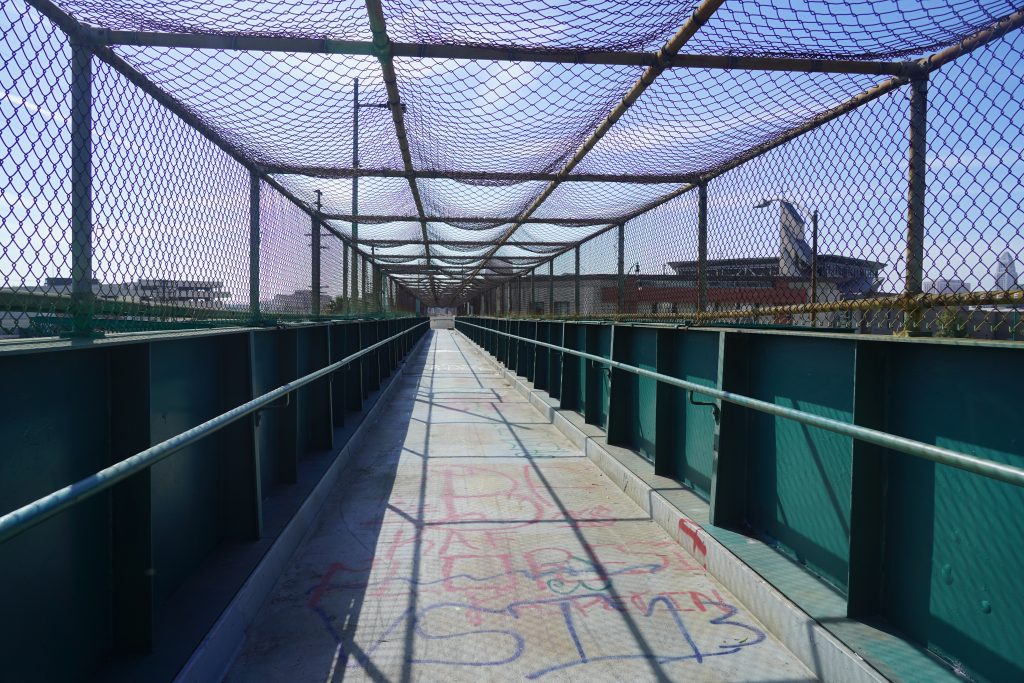Freeways divide neighborhoods. They make it hard for pedestrians and cyclists to get to destinations on the other side, through creating severance or barrier effects.
Because relatively few streets cross the freeway, they normally carry large volumes of traffic. Especially at on- and off-ramps, pedestrians and cyclists must navigate fast-moving cars and trucks entering and exiting the freeway.
At crossings, severance can be exacerbated by poor or missing sidewalks, lighting, or bicycle lanes

